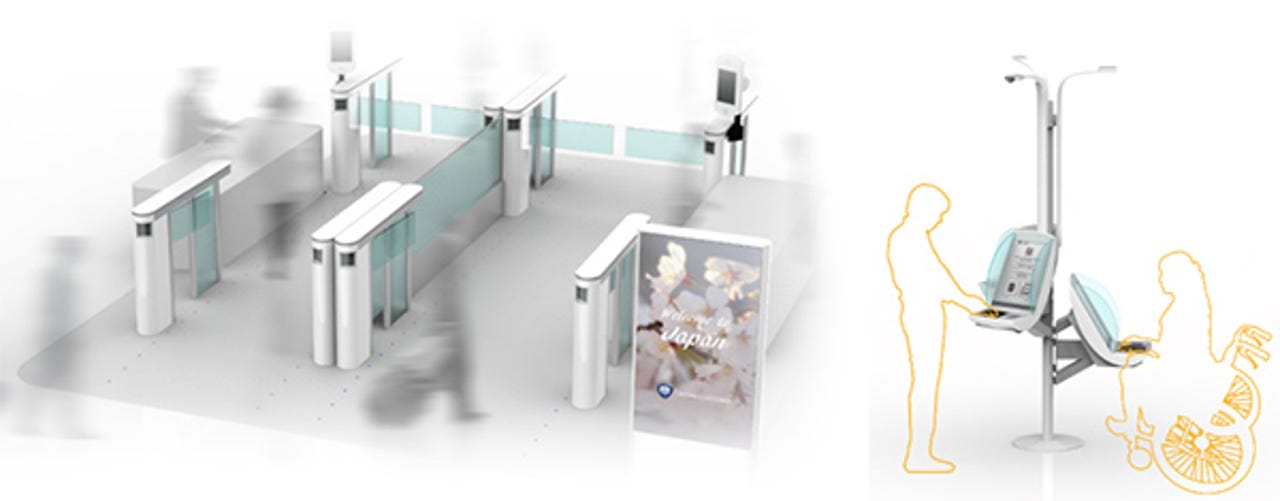Passengers to clear customs using facial recognition tech at Japan's busiest airport


Conceptual image the electronic customs procedure gate at a customs inspection area.
Passengers travelling through Narita International Airport in Japan will soon be able to clear customs using their face instead of physical identification documents, thanks to a facial recognition trial coming early next year.
The facial recognition technology, courtesy of NEC, will be installed at the customs inspection area at the airport. Demonstration trials of the electronic customs procedure gate are scheduled to begin at Terminal 3 from April 2019.
The "electronic procedure gate" will be installed at the customs inspection area that passengers move through after being admitted through immigration, NEC explained.
Travellers' identities will be confirmed at a kiosk terminal and at an exit gate equipped with the facial recognition tech. A smartphone app will also be available, expected to speed up electronic baggage declaration by enabling travellers to register baggage contents and passport information.
"NEC has already provided biometric identification systems, including facial recognition, to approximately 50 airports around the world, and we look forward to capitalising on this experience and know-how to contribute further to the security and safety of social infrastructure everywhere," NEC senior vice president Ryouji Hayashi said.
NEC has rolled out a network of 400 cameras with facial recognition capabilities to Georgia, and picked up a spate of contracts including the South Australia Police, Northern Territory Police, and CrimTrac that see the company offer up biometric capabilities.
Speaking at the NEC Advanced Recognition Systems Experience in Melbourne last year, NEC Europe head of Global Face Recognition Solutions Chris de Silva said there is no technical reason why a nation could not load its population into a watchlist and attempt to track them constantly in real time, but said such a system would throw out too many false positives.
According to de Silva, the simple reason why a system would fail is because with a large list of people to track, too many people look alike.
"We don't notice it, we don't see millions of people in one shot ... but how many times have people walked down the street following somebody that they thought was somebody they knew, only to find it isn't that person?" he told ZDNet.
Japan isn't the only country introducing biometric capabilities at airports, with Shanghai's Hongqiao International Airport last month unveiling self-service kiosks for flight and baggage check-in, security clearance, and boarding powered by facial recognition technology.
The rollout forms part of an ambitious country-wide rollout of facial recognition systems, with similar efforts already under way at airports in Beijing and Nanyang city, in central China's Henan province.
Similarly, some passengers travelling internationally from Australia via Qantas have been trialling biometric technology at Sydney Airport since July, with the first stage using facial recognition for them to complete automated flight check-in and bag drop, gain access to the lounge, and board the plane itself.
Additional steps proposed for future trials include mobile check-in and automated border processing, allowing passengers to use their face as their access identification.
RELATED COVERAGE
Facial recognition tech allows passengers to clear airport security in Shanghai
Shanghai Hongqiao International Airport has unveiled facial recognition-powered self-service kiosks for flight and baggage check-in, security clearance, and boarding.
NEC Australia to offer real-time video facial recognition
With video captured using fixed and mobile camera sensors in body cams, smartphones, and drones, NEC Australia customers can use the company's new facial recognition platform in real time.
Home Affairs denies mass surveillance capabilities of face-matching database
The technical specifications of the system 'would not allow it', the department has claimed.
Facial recognition technology could be used to track visa-holders leaving the US (TechRepublic)
A new federal program called Biometric Exit would match the photos of visitors flying out of the US to their visa photo, in an effort to curb illegal immigration.